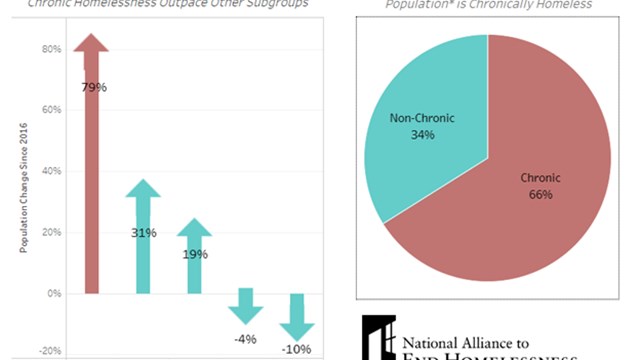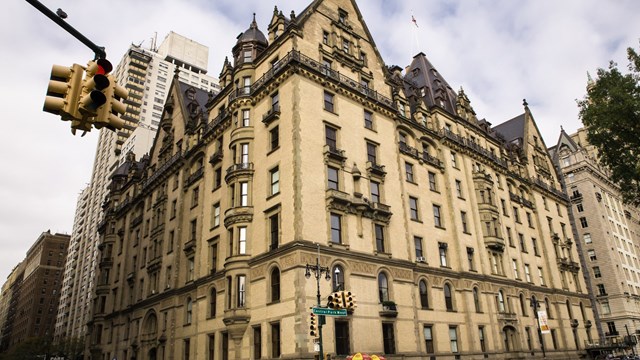
One of my five-year-old daughter’s favorite YouTube clips involves an elaborately decorated house, whose thousands of colored Christmas lights were programmed to flicker, strobe, wave, and blink to the tune of the Trans-Siberian Orchestra’s hard-rock holiday anthem “Wizards in Winter.” (The guy’s electric bill must have been through the well-lighted roof that December).
One of the benefits of living in a condominium is that your neighbor is not allowed to do to his unit what the guy in that video did to his. This is also, as the owner of the Trans-Siberian house would argue, one of the drawbacks. Of course, co-ops and condos in the five boroughs tend not to be detached dwellings; there are only so many lights an apartment owner can physically put in his windows. Living in a community means abiding by the rules of that community, and when the holidays roll around, decorations can become an issue—even in an apartment building in New York.
Non-Conforming
There are compelling arguments for and against allowing holiday decorations of any kind. Those against are straightforward: buildings don’t want to risk having to take legal action because a rogue unit owner wants to make a viral YouTube holiday video.
“The argument against is the issue on non-conformity, a reduction in perceived property value because of the haphazard nature of the displays,” explains David Berkey, managing partner of the Manhattan-based law firm of Gallet Dreyer & Berkey. ““Boards are concerned that the building will have a non-uniform look. Haphazard decorations make the building look less attractive than it otherwise would be. That’s why rules are put in place.”
Holiday decorations, as anyone who’s ever been to Wal-Mart well knows, can range in taste from the subdued and elegant to the over-the-top and wacky. Some boards want to nip in the bud any impulse to uglify their buildings, and they enact strict anti-decoration rules: nothing on the door, nothing in the windows.
“Some buildings do not allow hallways to be decorated,” says Enid Hamelin, director of marketing for Lawrence Properties, and an inveterate board member. “Other buildings are more flexible. It varies building by building. It varies by the people in the building. Buildings in Manhattan and Brooklyn may be different than buildings in Queens.”
Freedom of Expression
The pro-decoration argument is perhaps stronger. “The argument owners use for allowing modest decorations is free expression, that it should be protected,” says Berkey. “They argue it’s in good taste. They argue it’s only temporary.”
Decorations—modest, tasteful decorations, that is—can also be a way of creating a sense of camaraderie in the building. “There’s something about New York and the holidays—people tend to want to have a sense of community,” says Hamelin. “There’s a feeling of respect. If there’s a Christmas tree, there will be Hanukkah lights. Buildings tend to be ecumenical in that respect.”
Bruce A. Cholst, a partner in the Manhattan-based law firm of Rosen Livingston & Cholst, which specializes in the representation of co-op, condo and homeowners’ association boards, seconds the notion. “I have never encountered issues concerning the mounting of religious décor in exterior areas of an apartment, but my one recommendation would be to apply all restrictions on a strictly uniform basis; for example, if the board does not allow mounting of mezuzahs on doors, Christ figures should also not be allowed.”
“We’ve never seen a fight over a mezuzah on the door,” says Berkey. If anything, “large trees or large menorahs put up in front of larger units—those types of displays have engendered complaints for failure to comply with the rules.”
Indeed, of the multitude of reasons residents find for squabbling with one another, holiday decorations tend not to be high on the list, so much so that some boards don’t bother to address the issue at all.
“To the best of my knowledge, none of the boards we represent have enacted formal holiday decorating policies,” says Cholst. “However, the ‘standard operating procedure’ for our building clients seems to be posting one menorah and one Christmas tree in the lobby.”
It is recommended to have rules, however, just in case. A well-written house rule can prevent an internecine war over taste—and, in extreme cases, legal fees.
“If the board is going to permit decorations, it should address what would be permitted, and what the time frame would be for setting up and taking down, so there can be no room for debate,” says Berkey.
David Byrne, a shareholder attorney at the law firm of Stark & Stark and chair of the firm’s condominium and co-op group, agrees. “Typically, the rules should involve the size of the decorations and the length of time that they can stay up.”
Often, oversized decorations violate safety codes, so having a specific holiday decoration rule is superfluous.
“We have had isolated instances in which decorations posed perceived safety issues, particularly dried pine needles from Christmas trees and hallway obstructions in violation of fire codes,” says Cholst. “We have dealt with these isolated issues on an ad hoc basis, and whenever we have couched our requests for removal in terms of safety hazards, the residents have complied.”
Couching the decoration issue as a safety concern, in fact, is a savvy way of avoiding subjective issues with taste or religion. Another way is for the board itself to do the decorating.
“To maintain the balance between taste and preservation of appearance on one hand, and recognition of the inter-denominational holiday spirit and freedom of expression on the other, I would suggest (a) limiting decorations in the common areas to one Christmas tree and one menorah (where a complex has several buildings, one of each for each building) to be installed by the board, and allowing one non-electrical ornament of no more than 12 inches in length or diameter per apartment door, to be put up no earlier than the Monday preceding Thanksgiving and removed no later than January 5th,” Cholst advises. This sort of specificity tends to counteract the anti-decoration lobby, as it lets the board dictate what can and cannot be displayed; property values tend not to dip because of holiday lights in a lobby in December.
“I recommend publishing the information so people know what the rules are,” says Byrne. For example, if a board wants wreaths on the doors, they should make that a suggestion; if they’d rather the doors be bare, they should spell it out. The idea is to eliminate as much confusion as possible, and curtail free speech that gets a bit too free.
“The board should retain discretion to order removal of any decoration deemed to be in bad taste irrespective of size or location.”
Another suggestion: minor slip-ups regarding the holiday decoration house rules are not a compelling reason to lawyer up. “Don’t go crazy with rule enforcement and levying fines,” says Byrne. “If you’re only allowed to have wreaths on the door till January 30th, and he takes it down on February 15th—waive the damn fine. There’s no sense in getting caught in legal battles if he’s observed the rule.”
Although conflicts involving decorations tend to happen in the winter months, the same logic should be applied to other holidays—the Fourth of July, for example, or Memorial Day.
“I haven’t really seen patriotic decorations on individual apartments,” Cholst says, “but I would think the same kinds of restrictions would apply; a tasteful public display of perhaps a flag or discreet bunting in public areas and a small flag on apartment doors.”
The consensus is that it is prudent to allow modest holiday decorations, depending on the aesthetic of the individual building, as long as the overall look is dictated by the board. New Yorkers, as Hamelin says, tend to enjoy the holidays, and seasonal decorations have a way of spreading the cheer of the holiday season. People who live in cooperative housing want to be part of a community, or they’d live in a cabin in the woods. The key is not to take things too far—and to keep the Trans-Siberian Orchestra light and magic show reserved for the sound stages and concert halls.
Greg Olear is a freelance writer and a frequent contributor to The Cooperator.






Leave a Comment